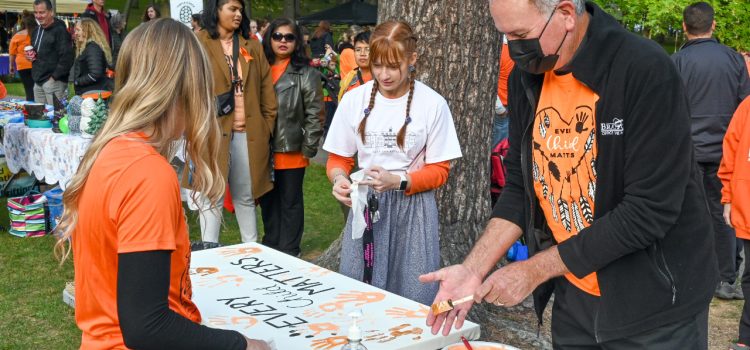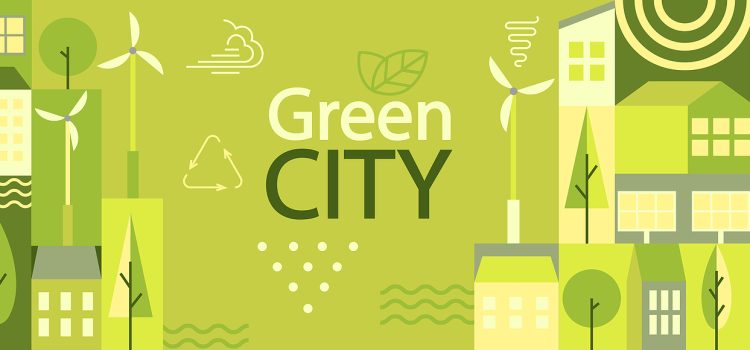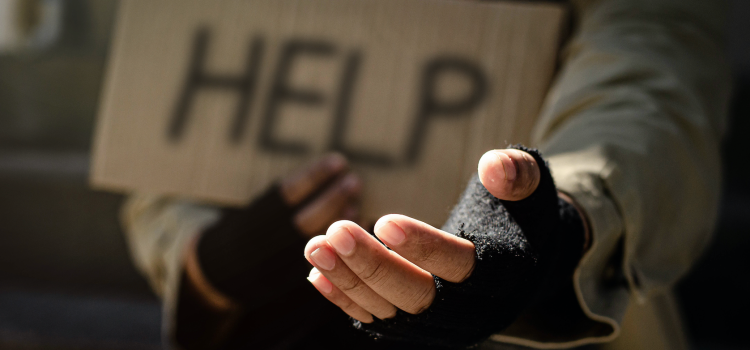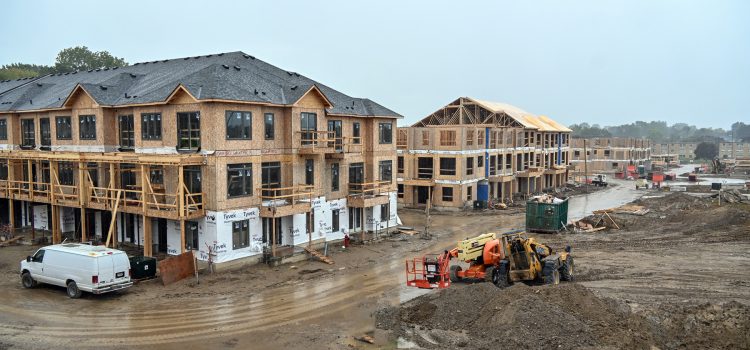provider: youtube
url: https://www.youtube.com/watch?v=WwoCo1MrFlU&t=4s
src: https://www.youtube-nocookie.com/embed/WwoCo1MrFlU?start=4&feature=oembed
src mod: https://www.youtube-nocookie.com/embed/WwoCo1MrFlU?start=4
src gen: https://www.youtube-nocookie.com/embed/WwoCo1MrFlU

Improving Downtown
I’ve worked downtown for more than 40 years, and I’ve been quite concerned about the deterioration we’ve seen in recent years.
That’s why, when I was elected in 2018, improving the downtown was one of my missions.
We set up a Downtown Task Force about 18 months ago made up of organizations with a stake in the core: businesses, Laurier, health, police and others.
The task force developed a program with three major components.
First, make it safer.
You can have all kinds of activities downtown but if people don’t feel safe, they don’t show up.
We now have police walking the beat 24-7. We’ve added eight new special constables who focus on the downtown and have powers under several laws, such as the Trespass Act and Mental Health Act. We’ve added closed circuit cameras. The city has hired a security firm to monitor city-owned properties.
And we have several programs designed to help the homeless and substance abusers to get off the street and into accommodation and/or treatment.
We’re also working with MP Larry Brock, who is raising the issue in Ottawa, that bail reform has resulted in some dangerous people getting back out on the street.
Second, make the downtown more vital.
As covid has ebbed, we’ve seen a return to community events in Harmony Square: concerts, movies, flag raising, roller-skating and more. The Sanderson Centre is now back to a full program. And Laurier is running more events for students in the core.
Laurier, which owns the former Market Square Mall, wants to turn it into an entertainment hub. They want to convert the former movie theatres on the second floor into a performing art centre to be used by community arts groups. They also want to see restaurants and other amenities in the building. It could be a significant draw in the core.
Third, have more people living downtown.
There are already some plans for new apartment developments on Market Street.
However, the underground services such as water and hydro are old and falling apart. They need to be rebuilt so they can support buildings that are eight or 10 stories tall. Those are the kinds of developments you want to see in the downtown.
Council has approved a plan to spend $25 million over the next five years to rebuild those services and, at the same time, create a new streetscape. There will be new streetlights, new sidewalks and other features to make it more people friendly. We’ll even have a new garbage collection system, so you won’t see bags out on the street.
It will be a complicated project, so we are working closely with downtown businesses and others to minimize the impact it will have on them.
Once it’s done, though, we will see new developments on land that is vacant or derelict right now.
The task force will continue to meet regularly and will hold annual summit meetings to review the status of the plan and any new ideas or action plans.
As we push forward with our plans, the downtown will become a safer, livelier place with more people enjoying more amenities. It will return to its role as the heart of our city.
To see the downtown plan, go here: https://www.brantford.ca/en/your-government/resources/Downtown-Brantford-Priority-Plan-A-Community-Vision-for-the-City-Centre.pdf

Partnerships
You can look at almost every aspect of city operations and you’ll find some kind of partnership with a community group, a charity, another government or some other agency.
We’re dependent on partnerships, which is why I often talk about the value of working together better.
Our partners bring a lot to the table. They have resources, expertise, knowledgeable volunteers and staff. Most of all they have a commitment to make the city better.
We have a productive relationship with the County of Brant. We’ve scored some successes with our shared programs to deliver social services and construct more than 500 affordable housing units.
But the affordable housing program goes beyond that. Private sector organizations such as Habitat for Humanity, Jaycee Homes and Indwell are going to develop another 500 affordable housing units.
In a similar vein, our shelter system is run by partners such as Nova Vita, Rosewood House and the Salvation Army.
Another significant partner is Six Nations. We’re finding projects we can do together that benefit both communities. For example, we’re working on a plan to develop a transit link between Six Nations and Brantford.
The Community Drug Strategy is another great example of the value of partnerships.
There isn’t one organization in town that can do everything that is needed to fight substance abuse. But working together, we do have the capacity, thanks to partners in the health care system, St. Leonard’s Community Services, the Grand River Community Health Centre and others.
An interesting partnership is the proposal to build a new centre downtown that will be the home of 10 different social services organizations.
Groups such as Woodview Mental Health and Autism Services, Community Living Brant, Willowbridge Community Services and the local branch of Canadian Mental Health Association would occupy a building on city-owned property adjacent to the parking garage. It would reduce their operating costs and make it easier for their 27,000 clients to access their services.
Not all our partnerships are big, city-wide efforts. We get right down to the grassroots in our partnership with neighbourhood associations which carry out their own programs and provide information back to city hall on what their neighbourhood needs.
One interesting example of a three-way partnership is the work Laurier Brantford did to develop a computerized record-keeping system for neighbourhood ice rinks. It used to be done on paper and was cumbersome. Now it’s easy for the neighbourhood associations to manage the information. This has also reduced staff time at city hall needed to process the information.
Talking about sports, the city’s parks department works with the Brantford Sports Council. It provides advice on the design of parks and sporting facilities, based on the needs of the various sports clubs. The plan for a new cricket pitch was made possible through the participation of the sports council.
Laurier and Conestoga College are huge partners. Not only have they brought thousands of students to the community, they are playing a leading role downtown by repurposing buildings that might otherwise be empty.
Laurier has taken over the former Market Square mall and has exciting plans for a new cultural hub – a small performance theatre – that arts groups have been seeking for years.
Conestoga focuses on skilled trades training and that’s something we really need here. Conestoga rents space in a city-owned hanger at the Brantford Airport where they deliver their large equipment course.
There are connections between the city and the Laurier Students Association. We meet regularly with them and because of their input, our transit buses now allow passengers riding after dark to get off between stops, closer to home. It’s a safer system that’s good for all our transit passengers, not just students.
We’re also working the Lansdowne Children’s Centre to find a new home for their work with children and youth with communication, developmental or physical needs. Their facility on Mount Pleasant Street is bursting at the seams. The city has offered them 10 acres at no cost at the Greenwich-Mohawk site.

Building Relationships
Building a better relationship with Indigenous Nations has been an important priority of the current council. We’ve taken several steps to do that.
Some of the work involves building better day-to-day connection between councils and between senior staff. We’re looking for nuts-and-bolts projects and programs where we can advance mutual interests. We hope that as we improve the working relationship, we can also improve the consultation process and promote reconciliation.
There is also the big question that hangs over all of us: land claims. What can we at the City of Brantford do as an ally of Six Nations to help them resolve their claims?
There are several things we’ve done to build ties. The city contributed $250,000 to the restoration of the former Mohawk Institute Indian Residential School so it can be turned into a museum. Now that there is an investigation of possible child burials in the area near the school, we have turned over all our relevant records. We’ve urged the federal and provincial governments to do the same.
We’ve done a lot to build the working relationship between our staff and Six Nations administrative staff. We’ve gotten them together for recreational events such as canoeing down the Grand. Developing one-to-one relationships is a great way to build trust.
In August, Elected Chief Mark Hill and I joined together to lobby provincial government ministries at the annual conference of the Association of Municipalities of Ontario. We talked about the land claims process and the consultation process. The provincial government has the legal responsibility for consultation but often delegates it to municipalities without enough guidance or support.
We’re looking at projects we can do together with Six Nations. One is developing plans for the Mohawk Lake area. The canal goes through Six Nations land and the lake is next to the Glebe property. There’s an opportunity to work together to clean up the area and make better use of it for both communities.
Six Nations has other properties in Brantford so we’re talking to them about how we can support their ideas for use of those lands.
We’re also lobbying the federal government to finance a transit link between Six Nations and Brantford.
This year we hired an Indigenous Affairs Officer. He has several roles. One is to advise the city on how the city administration can be a welcoming place for Indigenous employees and how we can make it a desirable place to work for Indigenous people.
It is also his job to assist in developing cross-cultural projects and provide advice on Indigenous issues, consultation and accommodation.
In 2019 we had plans to hold joint city-county-Six Nations council meetings, but Covid got in the way. It’s something I definitely want to revive if I’m re-elected.
Of course, one of the biggest issues we face is the unsettled Six Nations land claims. The elected council filed a lawsuit in 1995 to be compensated for questionable surrenders or loss of revenue over a 200-year period. It may come to trial in 2023 but it will take many years to work through the trial and appeals processes.
It’s an unresolved source of tension between Indigenous people and the other residents of the Haldimand Tract lands.
Our council has been advocating on behalf of Six Nations, urging the federal and provincial governments to get this resolved as soon as possible
We passed a resolution in July urging them to get moving. It also included an idea to help resolve the lawsuit. We suggested that part of the Ontario land transfer tax, which applies on land sales, go to Six Nations.
It was our way of saying to the province: please engage. We’re willing to be a partner in this. Let’s develop a strategy to resolve it, instead of this do-nothing approach we’ve had for decades.

Keeping Taxes In Line
No one wants to see property taxes go up.
But they do. Partially, that’s because of inflation. The city’s not immune from rising costs. And partially it’s because residents want more and better services.
What most people are interested in, though, is how much they’re going up
When city council approved the 2022 budget, the tax rate increase was 1.98 per cent. That was less than the inflation rate which was 2.3 per cent at the time.
My goal in 2018 when I was first elected, and my goal now, is to keep tax increases at or below the rate of inflation.
How do you do that?
During my career as a lawyer, I spent several years as the managing partner of my firm. It was my job to run the business side of a company with 55 employees and 20 partners. I learned there’s a pretty straightforward formula for making a business successful: maximize revenues and minimize expenses.
Here at the city, we’re doing both.
Traditionally, municipalities get money from three sources: property taxes, fees and government grants.
Our focus has been to find a fourth revenue stream to relieve the pressure on property taxpayers.
For example, Brantford Hydro merged with Energy Plus, the power company in Cambridge-North Dumfries. The result is a more efficient company that will pay bigger dividends back to its shareholders: the taxpayers in the three municipalities.
We are partnering with the County of Brant to examine the future of the Brantford Airport, which is owned by the city but lies in the county. We want to find out how we can generate more revenue from the airport. Can we increase the number of users? Can we lure new aviation-related businesses to the property? The increased revenue and taxes would flow to the county and the city.
The building boom helps too. When an eight-story apartment building rises on a previously empty property, the tax revenue goes up dramatically. Again, that’s more revenue without raising property tax rates.
The other part of the equation is controlling expenses.
During covid we learned that about a third city staff could work from home, with fewer absences and more productivity. That means we need less office space, which has resulted in huge savings.
We were planning to spend $20 million to renovate the old city hall for social services staff. Now we don’t need to do that. So, on top of the renovation savings, we can sell the old city hall. The money can go into affordable housing, the new hospital or other capital works. That saves us from raising taxes for those projects.
We also want to talk to Brant County about ways we can work together to offer better services and control operating expenses in both municipalities.
We’re already doing this with social services and affordable housing. There are other areas we could explore: sewer and water services, landfill operation, waste management and others.
Controlling city expenses also comes into play when the Expansion Lands north of Powerline Road are developed. We’ve adopted a policy that “growth pays for growth.” When the city builds new sewer and water lines and other services in the area, it will largely be paid for by development charges on the lots that will be sold by the developers.
The result of the sale of those residential, commercial and industrial lots will be more revenue for the city to finance programs and services for the entire city.

A Greener Brantford
I have to admit that when I took office in 2018, climate change was not in the top five of my priorities.
I wondered what one small city in Canada could do when countries the size of China and India are still building coal-fired power plants.
But I have to give credit to Coun. Cheryl Antoski who brought a resolution to city council to declare a climate emergency. She convinced me it was important that we, as a city and a community, do something about climate change. She said the more municipalities in North America do this, the greater the pressure will be on those who don’t take it seriously.
We also committed as a council to do more than simply pass a resolution. We decided to embody the intent of the resolution in our decision making.
Brantford was one of the first municipalities to look at every decision from the perspective of its impact on climate change.
That has led to some concrete, on-the-ground actions.
We want city operations to be Net Zero by 2050, if not sooner. That means a significant reduction in the volume of greenhouse gases emitted by city operations.
First, we’re electrifying the city’s vehicle fleet. We’ve already purchased electric cars. Pickup trucks are next on the list. They’re starting to become available at affordable prices. We find that, in the long run, electric vehicles are actually cheaper to operate.
Next will be buses. Not many are produced yet and the ones that are, are bought by bigger centres which can afford the high prices. But eventually they’ll be more available and cheaper, too.
Finally, there’s the big construction equipment. There may never be electric options but it’s possible that they will be versions running on alternative fuels, such as hydrogen.
Second, we’re reducing the carbon footprint of city buildings by making them more energy efficient. The expansion we’re doing at the police station will have solar panels and a heat pump system so it will be net zero.
A third significant source of greenhouse gases is the city landfill. Rotting garbage gives off methane gas. Right now, we’re diverting 20 per cent of garbage through the blue box program. We want to get that up to 80 per cent.
The new green bin program, which starts next year, will keep organic material out the landfill. Instead, the material will be put into a digester to be converted into compost.
The garbage diversion plan has another benefit, too. It will reduce the amount of material filling up the landfill, so the landfill will last longer. It’s next to impossible to develop a new landfill in Ontario these days. Some municipalities that have run out of space end up trucking their garbage long distances to a landfill. More trucks equals more greenhouse gasses.
We’ve doubled the size of our tree planting program, and I’d like to triple it in the next council term.
Another part of our environmental program involves protecting water.
We’ve taken steps to protect natural areas and underground water sources, especially in the Expansion Lands where thousands of new homes and businesses will be built in coming decades.
In that area, north of Powerline Road, we’ll change the way we manage runoff from rain, or stormwater. Traditionally, stormwater management meant directing water to storm sewers carried it to the Grand. We will have policies that will allow rain to soak into the ground to recharge the underground water sources, called aquifers. Not only does that help the aquifers, it reduces flooding downstream of Brantford.

The Future of Transit
Thousands of people depend on Brantford transit to get to work, go to school, visit the doctor or go shopping.
It’s important that we make sure our transit system meets the needs of the community.
We had a wake-up call last summer when we had to cut the frequency of the bus service. A lot of businesses are facing labour shortages these days. It hit the transit system, too, because the pool of part-time drivers was reduced by the Covid pandemic. When the regular drivers booked their vacations, we didn’t have enough relief drivers to fill in.
We saw the impact of that on our riders, businesses and institutions. It can already take somebody an hour to get to work from one part of the city to another, so the reduction really hurt. We heard from a lot of employers that it was a real problem for their workers.
We have to begin thinking about a new way to schedule our buses. This will become more important as new homes and businesses are built north of Powerline Road.
We’re already considering a second transit terminal north of Highway 403. That way, routes could run east-west to make it easier for people to get to and from work.
Transit will become more important as we see more infill developments, too. As new townhouses, apartments and condos are built in the downtown and other parts of the city, there will be a lot of potential new transit users.
We also need to look beyond the city boundary at the potential for new transit connections to other communities.
We already have transit links to communities to our east, such as Hamilton and Toronto, courtesy of Via Rail and GO. Right now, we have a GO Bus, but we’d love to have a train. That’s something we’re constantly pushing with the Ontario government.
Those are important ties, but we should also be looking north to Brant County, Waterloo Region and Guelph.
We don’t have a transit link to Cambridge and Kitchener, nor towns in Brant such as Paris and St. George. That underscores the need to have a truly regional transportation plan.
When I was at the annual conference of the Association of Municipalities of Ontario in August, I met provincial officials to discuss the potential for GO Bus service from Brantford to the communities north of us. Waterloo Region, in particular, is an economic juggernaut, especially in high tech. It would do us well to be better plugged into that area.
We need a link, as well, to Ohsweken and the Six Nations Territory. I’m working with Elected Chief Mark Hill to get federal government support for a transit link between our two communities.

Social Issues – Part 2
This is my second post on some of the social issues affecting the city. The first part dealt with the ways we’re helping individuals with substance abuse challenges. This post will discuss some of the other parts of the puzzle.
We want to get people off the street and into some sort of housing, whether it’s a shelter, transitional housing or their own place.
Members of the Brantford Downtown Outreach Team (BDOT) are in constant contact with homeless people, getting to know them and their problems. The team members help the homeless find accommodation, counselling and treatment, such as detox or mental health programs.
In some cases, the outreach workers can help a homeless person return home or find permanent accommodation. In other cases, they encourage them to go to one of our shelters. Nova Vita, the Salvation Army and Rosewood House have about 90 beds. Much of the year, that’s sufficient. In winter, when the need rises, we use motel rooms for the overflow.
But some people don’t want to go into shelters because they don’t want to abide by the rules: no drugs, no weapons, respect the curfews, etc. The rules are there to protect residents and staff.
Unfortunately, in some cases, those who decline help are people with significant mental health issues. Mental health providers have few options to deal with people who decline treatment. I believe that improving the Mental Health Act to allow more residential care options would help. That’s something we have to continue lobbying the Ontario government to improve. Meanwhile, the BDOT members will continue to get people the help they need.
The Community Drug Strategy team is also looking at creating a drug treatment, or diversion court, modelled after a successful program in Hamilton. The court would give offenders the choice of entering a court-supervised drug treatment program as an alternative to a criminal penalty. Being caught up in the criminal court system can be a powerful motivator for people who want to turn their lives around.
While our first goal is to always to help people, we have to balance that with protecting public safety.
Drug trafficking must be attacked on a regional level. The Brantford Police Service works closely with counterparts across Southern Ontario to go after traffickers. There have been several significant busts. Earlier this year, Brantford Police received a provincial grant of $1.5 million to target gangs and gun crime.
There’s a role for senior levels of government to play in enforcement. MP Larry Brock is pushing the government to revise bail rules which sometimes result in dangerous people being put back on the street.
We’re also stepping up enforcement.
In the downtown, we now have police officers walking the beat 24-7. We have installed closed circuit cameras to aid crime prevention and investigation.
Just recently we launched a new program involving eight special constables assigned primarily to the downtown. These constables can enforce a variety of laws such as the Criminal Code, Trespass Act, Mental Health Act and others.
The city also has a security team that keeps an eye on city-owned properties, such as parks and community centres. They also patrol the downtown parking garage.
Having a lot of eyes in the area can act as a deterrent to crime and unseemly behavior.
The city has a protocol in place to deal with encampments, or tent cities. When tents pop up in an area, we send out a social services team to help the people get services, such as shelter, medical treatment or other care. Hopefully, it will be enough to get them off the street.
If they don’t move out in a few days, a bylaw officer drops by to explain that they can’t continue to trespass. Finally, if they stay on site, the police will evict them.
It does mean that, to some extent, we’re just moving people around, but that’s all we have. The law does not allow us to arrest people because they’re homeless or trespassing. The only power police have is to remove them.
It does, though, give us a point of contact with the homeless. We do find that some get tired of moving around and ultimately accept offers of help from our social workers.
A few years ago, we had a major encampment, Love City, which was causing neighbourhood concerns, so police closed it down. But it did work out well for some of the people. They moved into our transition housing building on Marlene Ave where they got shelter and counselling to help them turn things around and move on to their own places.
These are not easy problems to solve. Cities across Canada – in fact, cities around the world – face them as well. We must continue to be creative and compassionate in looking for solutions that will help the homeless and ensure all of us can live in peace and safety.

Social Issues – Part 1
Homelessness. Mental health. Substance abuse. Crime.
As I go door-to-door I get a lot of questions about these issues from people across the city.
They want to know what the city and other levels of governments are doing about them.
These are complicated and tightly intertwined problems. There is no one-size-fits-all solution. You have to use multiple strategies and programs to, first, help those who need help, and second, ensure everyone feels safe in Brantford.
I’m going to write about what the city and its partners are doing, though it’s going to take a couple of posts to cover it.
First, let’s look at a big piece of the puzzle: drug abuse.
The opioid crisis plagues our entire country. We’ve seen far too many deaths and overdoses. It’s driving a crime spree that has brought gun violence to places where it never existed before.
I recognized the seriousness of the issue when I first ran in 2018. There was a Brantford-Brant Community Drug Strategy, but it wasn’t being fully implemented. One of my priorities was to reinvigorate it.
That’s what’s happening now. The Brant County Health Unit now has the staff and financial resources to lead the effort, working with several community organizations. Financial support comes from all three levels of government.
St. Leonard’s Community Services and Grand River Community Health Centre run the Brantford Downtown Outreach Team (BDOT). Team members get to know people living on the street and offer them help, whether it’s food, shelter, counselling or rehab.
They may not accept the offer the first time. But the team members develop a rapport with the people living on the street and keep making the offer. It might take 30 times before it clicks.
Brantford Police and St. Leonard’s run a Mobile Crisis Rapid Response team that pairs mental health specialists with police officers to respond to 911 calls.
St. Leonard’s has also set up a residential detox centre so individuals with substance abuse challenges can get help to kick their habit.
After rehab, the person will need a place to live. Sometimes that means moving into a transitional housing unit. The city runs one on Marlene Avenue, and St. Leonard’s is setting up a transitional housing program financed by the province. In addition to shelter, they get counselling and support to learn how to turn their lives around. After a time, they can leave the transitional housing unit and move into their own place.
The Grand River Community Health Centre is setting up a safer supply program with federal government financing. In this program, the person is given an opioid prescription, so they don’t have to commit crimes to pay for their next fix. It also keeps them away from street drugs laced with deadly chemicals. The goals are to reduce crime and keep the individuals alive until they can get into a rehab program to escape from drugs.
Prevention is important, too. Many individuals with substance abuse challenges start using as teenagers. Perhaps it’s to ease the pain of some trauma or deal with a mental health issue such as anxiety or depression. They turn to drugs to self-medicate and before long it becomes an ingrained habit.
To reach out to young people we’ve put our recreational programs under the wing of the social services department and moved the programs out into the community centres. A lot of our programming is now targeted at helping teens become more adaptable, stronger and more resilient so they don’t feel tempted to use drugs. Other countries have been doing this for years and find that it is money well spent.
Is all this working? The health unit gathers data on the number of overdoses and deaths. Some of these programs are relatively new so it may be too early to know for sure.
But we do know we have to continue to do everything we can to help these people, for their sake and ours.
In my next blog I’ll write about homelessness, mental health and public safety.
For more information on the community drug strategy go to: https://www.brantford.ca/en/living-here/brantford-brant-community-drugs-strategy.aspx

Housing and growth
We’ve all watched house prices soar in the last couple of years. Young families worry if they’ll ever get their own place. Their parents want to help but don’t always have the resources.
Ontario – and especially our region – is growing rapidly. Brantford is a particularly attractive place to live but, unfortunately, our supply of houses hasn’t met the demand.
Ontario’s population is expected to grow by 50 per cent over the next 30 years. The Ontario government forecasts Brantford’s population will grow even faster and by 2051 our city could have 165,000 people, up from 105,000 now.
We’ll need tens of thousands of new housing units to keep up. If we build enough units, we may be able to bend the curve on housing prices. If you have 10 people chasing one house, you see bidding wars. If they’re chasing eight houses, there’s less pressure on prices.
Where are they all going to go? There are two parts to the answer.
First, is infilling. That’s building new housing units on land inside the current city. Often, it’s on empty pieces of land that once housed business or factories. Some good examples are the townhouses going up on the former Canadian Tire property on Colborne Street, and the new apartment tower on Market Street South.
There are thousands more units in the pipeline and, fortunately, a lot of them are rental units. The City of Brantford has programs to encourage rentals, particularly in the downtown and for privately built affordable housing units done in partnership with CMHC. We’ll phase in property taxes over a 10-year period and waive some development fees to keep the cost of construction down.
Council just approved a 424-unit rental complex on King George Road that will appeal to seniors. That means they’ll move out of their single-family homes, freeing them up for young families to buy.
Infill development has a lot of other benefits. Derelict properties are put to use. More property taxes are collected. Local merchants have new customers. The transit system has more potential riders.
The second part to the answer is what we call the Expansion Lands. That’s land north of Powerline Road to Highway 99 that the city annexed from Brant in 2017.
It has room for about 40,000 people. It also has room for new industries and businesses that will create about 20,000 jobs.
Getting the land ready for development is a big job. The city is conducting environmental assessments to find the best routes for sewer, water and other services to get to this land. At the same time, the landowners and city staff are developing detailed plans. Where will the roads be? Where will the houses go? Where will the stores, businesses, schools, community centres and parks be?
The city’s cost to get services to the land will be about $500 million. However, we have adopted a policy that “growth pays for growth.” Much of the money for the services will come from fees collected on each building lot, not from current taxpayers.
We could see construction in 2024 in some parts of the Expansion Lands that are relatively easy to service. Other parts could see development starting in 2025-26. This area will meet our housing needs for decades.
As people move into the area, we’ll add public amenities such as community centres and likely a new library branch. We could develop a new transit terminal in the north end to serve people travelling east-west from home to work. We will also have to improve our paramedic services and expand Brantford General Hospital to meet the growing demands. The new fire station on Fairview Drive was built to service the Expansion Lands.
The plan for the Expansion Lands includes strong environmental protection for underground water sources (aquifers) and sensitive natural areas, such as the ravines.
For the city as a whole, the growth will bring more opportunities for housing, jobs, entertainment, shopping, education and more.
Managing this growth so it benefits both current residents and newcomers will be a major responsibility of the city and its staff for many years. I’m confident we will do it.